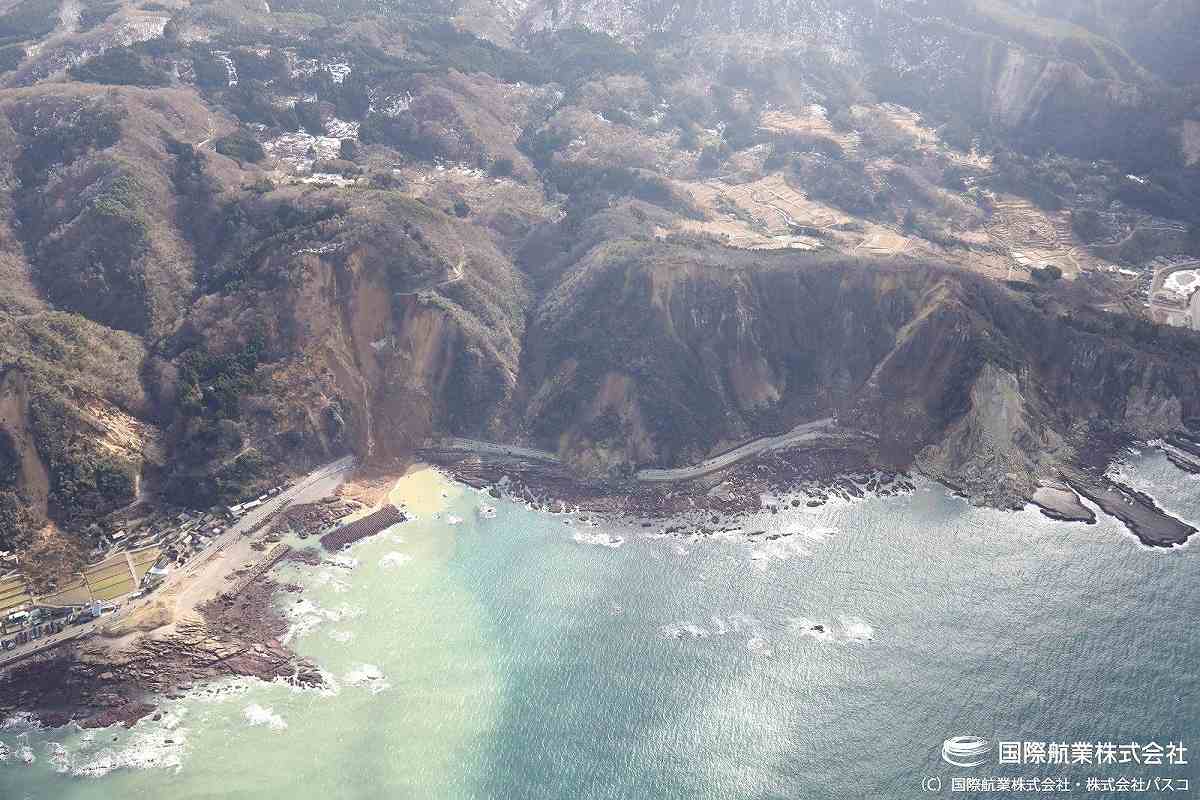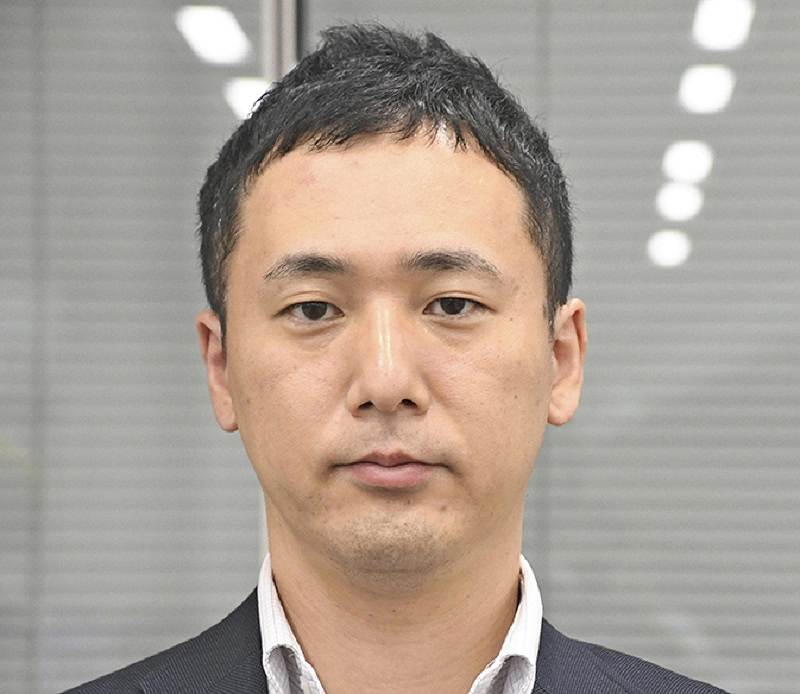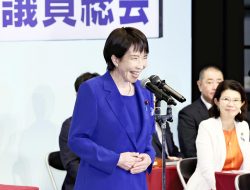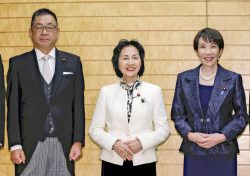Noto Quake Shows Need to Quickly Share Accurate Data; Also, Social Media Misinformation Must Be Avoided

Landslides in Suzu, Ishikawa Prefecture, cut off a coastal road.
8:00 JST, March 2, 2024
On the afternoon of Jan. 1, a major earthquake struck the Noto Peninsula. It had a maximum intensity of 7, and its magnitude was 7.6, making it the largest recorded quake in the Noto region since statistics began in 1885.
The epicenter of the quake was 16 kilometers below the surface in the city of Suzu, Ishikawa Prefecture, on the northeastern part of the peninsula. According to the government’s Earthquake Research Committee, a rupture of the bedrock that began at the epicenter extended about 150 kilometers and is believed to have been caused by the interlocking of several active submarine faults on the northern side of the peninsula.
In addition to a large number of collapsed houses, mainly in Ishikawa Prefecture, fires broke out one after another and landslides occurred in various areas, and tsunami also swept over the coastal areas. As of Feb. 26, the death toll from the earthquake in Ishikawa Prefecture exceeded 240, and over 10,000 people had been evacuated.
Why did the Noto Peninsula Earthquake cause such extensive damage?
One reason is the large number of old wooden houses in the area. While recently there had been a series of earthquakes of a certain degree of intensity, major earthquake-proofing work had not progressed, resulting in the loss of many people’s lives when they were trapped under collapsed houses.
Some reports also indicate that even houses with a certain degree of earthquake resistance were found to have collapsed. Experts believe that the frequent earthquakes built up cumulative damage to columns and other parts of the houses, until the recent earthquake dealt the final blow.
In addition, the earthquake occurred after 4 p.m. on New Year’s Day. It was not easy to identify the extent of the damage, as the sun was soon to set and the surrounding area was enveloped in darkness. Landslides that blocked the main road also cut off traffic and communication networks, making it difficult to understand the actual situation in order to conduct search and rescue operations. This is believed to have resulted in inadequate communication among the central and local governments.
Regardless of the location or time of a disaster, capturing accurate damage information quickly will remain a challenge in the future.
On the other hand, Japan’s research institutes and private companies have been drawing attention for their contributions to understanding the damage caused by the earthquake and supporting the affected areas through the use of geographic information systems, remote sensing and other information technologies.
The Geospatial Information Authority of Japan (GSI) released data on crustal deformation on the Noto Peninsula on the day of the earthquake. It also released a variety of digital data, including aerial photographs of the Noto Peninsula, analysis of observation data from the Earth observation satellite ALOS-2, maps of landslide damage, and maps of flooded areas from the tsunami.
In Japan, it is often said that the government is slow in releasing information, but the GSI’s digital data was quickly released in a form that facilitated secondary analysis and use, resulting in widespread use by researchers and the media. An official from the GSI said: “Every time a disaster occurs in Japan, we have released data detailing the damage. The accumulation of such experience may have led to a quick response this time.”
Private companies also acted promptly. On Jan. 3, Kokusai Kogyo Co., an aerial surveying company, announced the location of fires and landslides based on aerial photographs of the Noto Peninsula.
Axelspace Corp., a space venture company, released images taken by its satellite free of charge. Until now, it has been common for U.S. companies such as Maxar Technologies and Planet Labs PBC to release satellite images of disaster-stricken areas when a major earthquake occurs, but University of Tokyo Prof. Hidenori Watanabe said, “I highly appreciate the fact that Japanese companies have begun to release satellite images on their own.”
However, it was not only correct information that spread after the earthquake, but also “false information” in the world of social media.
On X (formerly Twitter), multiple false addresses were posted by several accounts claiming to be victims of the earthquake soon after the quake occurred, and were spread by other users. Some posted videos of what appeared to be doctored footage of the tsunami caused by the Great East Japan Earthquake, presented as if it were the tsunami caused by the Noto Peninsula Earthquake. The Internal Affairs and Communications Ministry called for caution against false information, and asked social media operators to respond appropriately to such information with a view to deleting inappropriate posts.
It is said that hoaxes are more likely to spread during a disaster. If hoaxes abound on the internet, they might prevent necessary information from reaching disaster victims and might hinder rescue efforts in the area.
Every one of us should be careful not to be misled by hoaxes, but it is also important to take measures to prevent the spread of such false information. In a report released last October, the Cabinet Office and the Economy, Trade, and Industry Ministry showed the need for research and development of technology to detect false information on social media, citing “an increasing number of cases in which unreliable information is spread on the internet and has an impact on society.”
Japan is known as an “archipelago of disasters.” Japan is expected to be hit by not only earthquakes but also volcanic activity, typhoons and other disasters in the future. The government, research institutes and businesses must work together to ensure that disaster victims and those who wish to help them are not misled by false information and can act based on correct information even in times of disaster.
Political Pulse appears every Saturday.

Sho Funakoshi
Funakoshi is a staff writer in the Science News Department of The Yomiuri Shimbun.
"Editorial & Columns" POPULAR ARTICLE
-

Violations of Subcontract Law: Major Automakers Must Eliminate Old Practices
-

Local Governments’ Tax Revenues: Devise Ways to Correct Imbalances in Tax Sources
-

5 Japanese Business Dinner Mistakes to Avoid — and What They Taught Me About Business in Japan
-

Heavy Rains in Asia: Support for Victims, Flood-Control Measures Urgently Needed
-

Rice Coupons: A Misguided Approach to Countering Rising Prices
JN ACCESS RANKING
-

Tokyo Economic Security Forum to Hold Inaugural Meeting Amid Tense Global Environment
-

Keidanren Chairman Yoshinobu Tsutsui Visits Kashiwazaki-Kariwa Nuclear Power Plant; Inspects New Emergency Safety System
-

Imports of Rare Earths from China Facing Delays, May Be Caused by Deterioration of Japan-China Relations
-

University of Tokyo Professor Discusses Japanese Economic Security in Interview Ahead of Forum
-

Japan Pulls out of Vietnam Nuclear Project, Complicating Hanoi’s Power Plans























